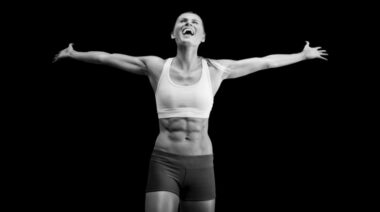New research1 out of Northwestern Medicine has discovered that circadian clocks in muscle tissue control the muscle’s metabolic response and energy efficiency meaning that the muscles reactions differ based on the time of day.
The research appears in Cell Metabolism, and provides insight into how muscles adapt to exercise and use of oxygen depending on the time of day. All of us have a circadian clock in our body’s cells that control our activity and reactions to our environment over a 24 hour period.
“Oxygen and the internal clock are doing a dance together inside muscle cells to produce energy, and the time of day determines how well that dance is synchronized,” said senior author Joseph Bass, MD, PhD, chief and Charles F. Kettering Professor of Endocrinology in the Department of Medicine. “The capacity for a cell to perform its most important functions, to contract, will vary according to the time of day.”
“We’re not saying we can tell athletes when they should work out,” says Bass. “But in the future, perhaps, you may be able to take advantage of these insights to optimize muscle function.”
Beyond the application to workouts and exercise, the research is important because a lack of oxygen at the cellular level is a key factor in heart attacks and cancer. The depletion of oxygen in cells enables cancer cells to flourish. In diabetes, understanding how to better regulate cell use of sugars may prove beneficial in future treatments.
This research used mice in its studies. The mice were put into exercise sessions on a treadmill during different times of the day. In addition, isolate muscle fibers had their circadian clock genetically altered for the purposes of this research. By looking at the genes that are important for exercise, the researchers became aware of the impact of the circadian clock on how muscles process sugars and fats, and oxygen levels.
“When we manipulated the clock genetically, we noticed there were profound abnormalities in the muscle,” Bass said. “That set us on a course to understand how the inner muscle clock is important in regulating how well the muscle cell can mobilize energy.”
Mice are nocturnal and therefore their muscles perform better at night. The way these genes turn on directly correlate to humans, who have these same genes, and may be better suited to workout during the day. In general, your muscle clock interacts with proteins called HIFs which, in turn, impact metabolism. When oxygen levels go down in a cell, HIFs allow the cells to continue to make energy.
Oxygen levels can drop when you do intense exercise because you consume oxygen faster than you can get it. That’s when HIFs kick in and tell the muscle to switch to sugar for energy (which causes an increase in lactic acid). If you turn off the clock, the muscle won’t have its normal capacity to burn sugar and generate lactic acid. So, it is more than likely that your muscles are doing their best work at specific times of the day when your circadian clock can trigger HIFs optimally.
“In the future, we may discover new ways to manipulate the oxygen response of the cell by resetting the clock,” Bass said.
In general, the way the body’s internal clock manages oxygen is important for a number of reasons, but the researchers chose to focus on muscle cells in particular because they are very dependent on oxygen for metabolism and contraction, particular during intense exercise.
If you have a certain time of day when you feel like you are at your best for a workout there is a scientific reason for it. The boxer Floyd Mayweather Jr would prepare for fights by training throughout the night sometimes going for his runs at 1 am. That’s an unusual circadian clock for a human but it seemed to work for him.
Reference
1. Peek, Clara Bien, Daniel C. Levine, Jonathan Cedernaes, Akihiko Taguchi, Yumiko Kobayashi, Stacy J. Tsai, Nicolle A. Bonar, Maureen R. McNulty, Kathryn Moynihan Ramsey, and Joseph Bass. “Circadian Clock Interaction with HIF1α Mediates Oxygenic Metabolism and Anaerobic Glycolysis in Skeletal Muscle.” Cell Metabolism 0, no. 0 (October 20, 2016).






